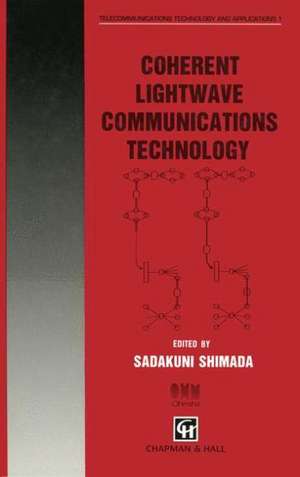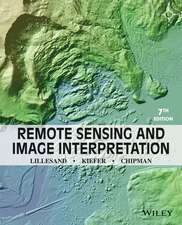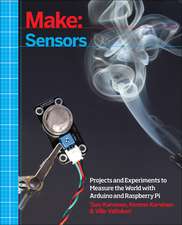Coherent Lightwave Communications Technology: Telecommunications Technology & Applications Series
Editat de S. Shimadaen Limba Engleză Paperback – 31 oct 1994
Preț: 387.20 lei
Nou
Puncte Express: 581
Preț estimativ în valută:
74.09€ • 77.36$ • 61.32£
74.09€ • 77.36$ • 61.32£
Carte tipărită la comandă
Livrare economică 04-18 aprilie
Preluare comenzi: 021 569.72.76
Specificații
ISBN-13: 9780412579400
ISBN-10: 0412579405
Pagini: 258
Ilustrații: XIII, 258 p. 6 illus.
Dimensiuni: 155 x 235 x 15 mm
Greutate: 0.4 kg
Ediția:1995
Editura: SPRINGER NETHERLANDS
Colecția Springer
Seria Telecommunications Technology & Applications Series
Locul publicării:Dordrecht, Netherlands
ISBN-10: 0412579405
Pagini: 258
Ilustrații: XIII, 258 p. 6 illus.
Dimensiuni: 155 x 235 x 15 mm
Greutate: 0.4 kg
Ediția:1995
Editura: SPRINGER NETHERLANDS
Colecția Springer
Seria Telecommunications Technology & Applications Series
Locul publicării:Dordrecht, Netherlands
Public țintă
ResearchCuprins
1 Introduction to coherent lightwave communications.- 1.1 Coherent light.- 1.2 Historical aspects.- 1.3 The significance of coherent lightwave communication technologies on future telecommunication networks.- 2 Theory of optical coherent detection.- 2.1 Optical heterodyne detection.- 2.2 Optical homodyne detection.- 2.3 Linewidth influence.- 2.4 Receiver sensitivity comparison.- 2.5 Power spectrum.- 3 Coherent transmission technologies.- 3.1 Optical source.- 3.2 Modulators.- 3.3 Fiber dispersion.- 3.4 Fiber nonlinearities (Nori Shibata).- 3.5 Heterodyne receiver (Katsushi Iwashita).- 3.6 Transmission characteristics and delay equalization (Katsushi Iwashita).- 3.7 Polarization compensation (Katsushi Iwashita).- 3.8 Homodyne detection (Katsushi Iwashita).- 4 Optical filters and couplers.- 4.1 Optical filters.- 4.2 Mach-Zehnder interferometer waveguide-type filters (Masao Kawachi).- 4.3 Optical couplers.- 5 Optical frequency division multiplexing systems.- 5.1 Optical frequency stabilization and measurement.- 5.2 Multichannel frequency stabilization.- 5.3 Fiber nonlinear effects in optical FDM systems.- 5.4 Channel selective receiver utilizing heterodyne detection (Hiromu Toba).- 5.5 Channel selective receiver utilizing optical filter and direct detection (Hiromu Toba).- 6 Optical amplifiers for coherent transmission and optical FDM.- 6.1 In-line amplifier systems.- 6.2 Common amplifiers.- 7 Systems applications.- 7.1 Long-haul trunks and submarine communications.- 7.2 Optical FDM networks and switching systems.- 7.3 Optical SDM and TDM networks and switching (Kiyoshi Nosu).- 8 Epilogue.
Recenzii
`Although this book is entitled Coherent Lightwave Technology, which is its major theme, much of the material is also applciable more widely to multichannel optical transmission systmes in general. The scope of the book is from the basic theory of coherent communications through to practical engineered systems and their design.'
British Telecommunications Engineering
British Telecommunications Engineering


















